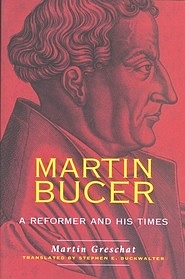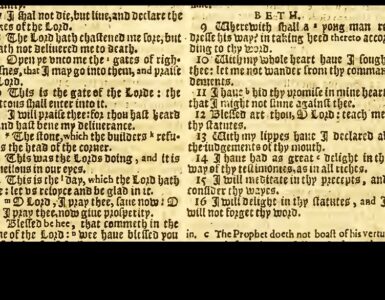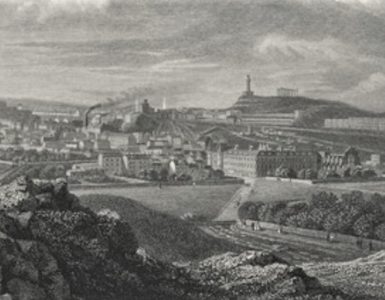My first encounter with the work of Martin Bucer occurred through reading De Regno Christi (The Reign of Christ). The book was written for young King Edward VI of England to guide him through the use of Scripture to rule under the reign of Christ. Edward had been influenced in the direction of Protestantism through his tutors, Thomas Cranmer, and others. As has often been said, Edward was seen in his day as the “new Josiah”; the original Josiah ruled the Kingdom of Judah. King Josiah began this thirty-year reign when he was but eight years of age; Edward began his six-year rule at the age of nine. Josiah ended idolatry, renovated the Temple, and was guided by the rediscovered Law of God to bring reform and reverence for God; Edward’s rule made a decided turn towards a committed Protestantism and accelerated reform of the Church of England. Part of the program for England’s reform involved bringing Protestants from the Continent to teach in the colleges. One of those refugee reformers that lectured was Martin Bucer who taught in Cambridge for about three years until his death in 1551. When I read the Wilhelm Pauck edited De Regno Christi in The Library of Christian Classics a few years ago and then when I read it again for this review, I came to agree with Pauck that Bucer “wrote in an extraordinarily … wordy, and repetitious style.” However, De Regno Christi is important for understanding the English Reformation and it is well worth the read, but it does require some patience.
Now to Martin Greschat’s book, Martin Bucer: A Reformer and His Times, translated from the original German of 1990, by Stephen E. Buckwalter and published by Westminster-John Knox Press in 2004. The chapters include “Humble Beginnings,” the teachers that influenced him in “Between Erasmus and Luther,” his early work in “A Preacher in Strasbourg,” his growth into a reforming leadership role in “Spokesman of the Strasbourg Reformation,” “A Champion of Protestant Unity,” “The Reformation of the Empire,” the Schmalkaldic War and its results for the Reformation in “Defeat,” and the last chapter in the German edition was “Exile and Final Days.” When the book was published in English the author added another chapter, “New Insights,” in which he interacted with publications during the fourteen years since the German edition debuted. The book is documented with endnotes, and includes a bibliography, index, and some helpful but not easily read maps (maybe the German edition included fold-out maps and the English edition reduced them to page size).
Sometimes when a book’s title includes the words and his times, it is not exactly accurate because there is either little or no information about the times. In the case of Greschat’s book there is considerable text about the politics, society, history, vocations, geography, power and practices of the papacy, along with other material that paints a picture of the environment in which Bucer lived. For example, the first chapter begins with a description of the village of Sélestat, Bucer’s place of birth, which focusses on its church situation and provides information about the Latin school and its instructors where Bucer would study. The Bucer name is not even mentioned until the paragraph on page ten just before the section, “Family Background and Early Childhood.” I am likely one of a minority who appreciates church history writing that weaves into its narrative the non-theological and other historical influences on the biographical subject, so if a fuller picture of the factors contributing to the development of the biographical subject is appreciated, this book will fill the bill.
Bucer comes across to me as admired by students and the general populace, but when it came to the Protestant leadership, particularly on the Continent, he was not trusted by some because he was seen as too willing to cross party lines and compromise. However, he was admired by some leaders including John Calvin. An indication of Bucer’s character noted by Greschat is indicated in the quote “the righteous accuses himself first, then others,” which appears to be an application of Luke 6:41 to his clarification of some personal misstatements that came out of his participation in the Wittenberg Concord (p. 141). Even though Bucer was in England for just three years, he was not only influential through De Regno Christi, his Cambridge lectures, and iron sharpening iron through his correspondence with fellow exile Peter Martyr Vermigli, but also because of his involvement in the revision of the Church of England’s Book of Common Prayer that was published in 1552 (p. 270).
Martin Bucer died February 28, 1551. It appears that the English admired Bucer more than those on the Continent because, according to Wilhelm Pauck, about 3,000 attended when he was buried in the choir of Great St. Mary’s. Future Archbishop of Canterbury Matthew Parker delivered the eulogy. Bucer’s final resting place was really not final because during Queen Mary’s war against Protestantism, his remains were disinterred and burned. Currently a brass plaque on the floor of the choir marks his former burial site.
Some may wonder why a book published in 2004 is being reviewed at all. Reviews are generally written for current titles. I purchased a new copy of the book a few weeks ago, so either the book did not sell well and inventory has been languishing in warehouses for thirteen years or maybe it has been reprinted without noting it in the book. However, given the current publication technology it is likely that hard copy books will never go out of print due to on-demand printing. Regardless of the reason for my new copy of an old title, Martin Greschat’s book about Martin Bucer is a wonderful read which recounts the life of an interesting reformer.
Barry Waugh





